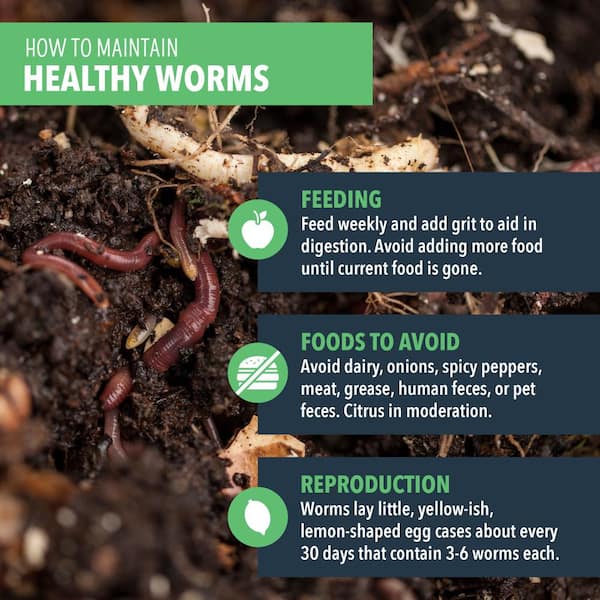How North Carolina Worms can Save You Time, Stress, and Money.
How North Carolina Worms can Save You Time, Stress, and Money.
Blog Article
The Basic Principles Of North Carolina Worms
Table of ContentsNot known Incorrect Statements About North Carolina Worms The Single Strategy To Use For North Carolina WormsAll about North Carolina WormsThe smart Trick of North Carolina Worms That Nobody is Talking About
Instance: 1-gallon of worm castings to 4 gallons of potting mix. 1/2 cup in the base of the growing hole for smaller plants. 1 cup for bigger plants.
The enhancement of tea can also add raised microbial biomass to your soil. You can constantly side-dress your plants with worm spreadings at any moment. Simply keep in mind, the microorganisms will certainly die if revealed to UV rays (Sun), so make sure to cover the castings with an inch approximately of soil.
This frustrated them for years up until the screening techniques ended up being better. It would certainly get much better(with even more spreadings), level off, and after that decrease. Also numerous worm spreadings would certainly increase the growth to a speed that the plant can not recoup from.
Not known Details About North Carolina Worms
I have stated the virtues of worm spreadings for about 2000 words. Worm castings are no various. It takes time to produce high quality worm castings.
You can purchase them which results in second. Worm castings absolutely set you back even more than chemical fertilizers. Worm castings are on the cheaper end of natural fertilizers. You will need to choose what is a lot more essential. It is easy to generate little amounts of worm spreadings. (50 gallons annually) It is a much more challenging and extremely expensive financial investment to create large quantities of worm castings (Lake Rhodhiss Bait).

Creating a healthy dirt might be the greatest advantage of worm spreadings. Healthy dirt was talked about and how important this has actually become to everyone. The top 10 benefits of worm spreadings were also offered. We discussed worm spreadings NPK and also the appropriate nutrient evaluation that must put on worm castings.
The Greatest Guide To North Carolina Worms
We talked about some of the drawbacks connected with worm castings. I covered a lot of material in this short article.
The upright burrows are commonly open, although the worms cap the top with residue and excrement. Roots require oxygen for their growth, whereas they produce carbon dioxide that needs to leave the dirt.
Earthworms boost porosity by two mechanisms: (1) by developing irreversible burrows, and (2) by enhancing soil aggregation. Aggregation is improved by the blending of soil and natural issue in the earthworms' guts. Lake James Bait. These highly secure aggregates are transferred by some earthworms in their burrows, and by others at the surface of the dirt


In an additional research, earthworms were approximated to eat 4 to 10 percent of the leading 6 inches of the dirt each year. Dirt compaction lowers the porosity of the dirt.
The Best Strategy To Use For North Carolina Worms
Typical earthworm populaces can conveniently take in 2 lots of completely dry matter per acre per year, partially digesting and mixing it with dirt. The value of earthworms to mix surface area residue with dirt comes to be extremely clear in soils that do not have any kind of earthworms. A lot of our Pennsylvania soils contend least some earthworms, and the effect of their full absence, consequently, can not be noted.
(https://deepbluedirectory.com/gosearch.php?q=http%3A%2F%2Fwww.northcarolinaworms.com%2F)In these soils, the formation of topsoil with reasonable raw material web content did not happen, causing inadequate plant development. When the cause was established, the government of the Netherlands started a campaign to introduce earthworms. After the introduction of the earthworms, a dark topsoil layer was formed, and crop growth boosted significantly.
They live largely from partially broken down organic matter that is already incorporated in the soil. They eat their way via the dirt, producing horizontal burrows that they fill with their waste matter. These varieties ingest large quantities of dirt that they mix with digested plant deposit in their digestive tracts. or anecic species stay in irreversible vertical burrows that can be 5 or 6 feet deep.
These species consume substantial quantities of soil that they blend with digested residue in their guts. Their excrement is largely deposited at the surface area of the soil.
Report this page